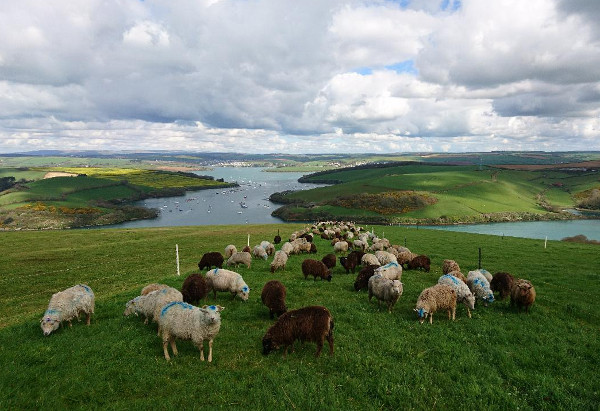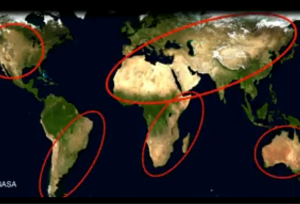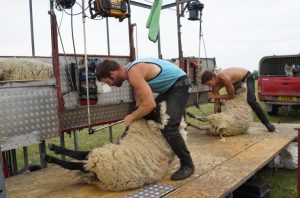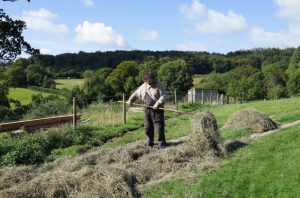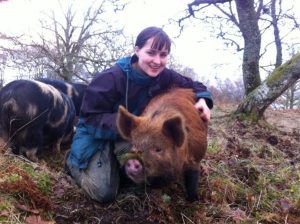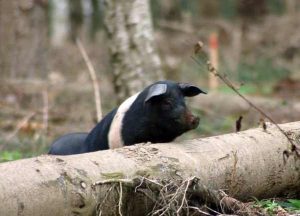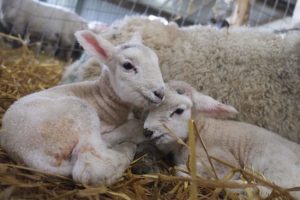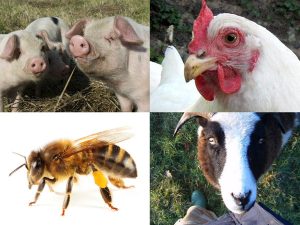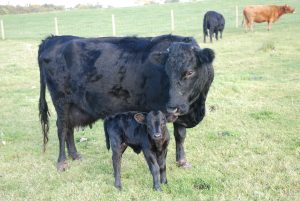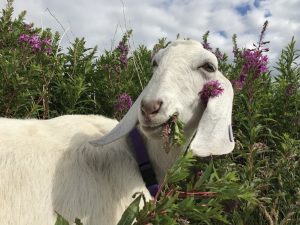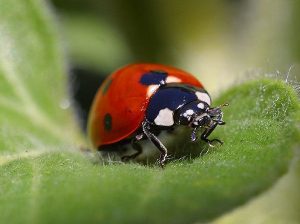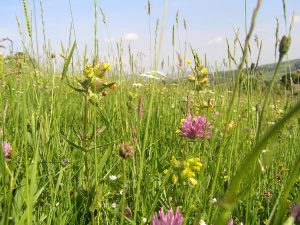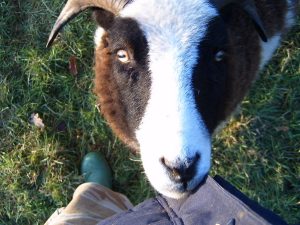“Many sheep farmers waste more than a third of the grass on their farm because they do not plan grazing wisely.” This is according to Susan Buckingham, extension officer at the Institute of Biological, Environment and Rural Sciences’ Grassland Development Centre at Aberystwyth University, who has worked with farmers to optimise grazing efficiency. “Farmers who achieve excellent utilisation rates will be using 80 per cent of their grass, but on many farms the figure is nearer to 50 per cent. This wastage results in higher feed costs, both in terms of conserved forage, which is twice as expensive to produce as grazed grass, and bought-in concentrate, which costs four times as much.”
How to manage grazing?
Good grazing systems match livestock needs to grass growth. Grass growth and stock needs vary through the year, so measuring grass and adjusting the grazing area and/or stock numbers throughout the season is essential for efficient grazing management. Choice of grazing system should be based on individual preference and will be affected by practical and financial considerations such as farm layout, field size, parasite control and labour availability.
Many farms adopt a combination of systems, for example, continuous grazing at lambing and rotational grazing later in the season. Whichever system is adopted, the key to success is attention to detail; regular measuring and responding to grass growth to provide the right amount of grass to meet livestock needs.
There are two basic methods of grazing: Continuous and Rotational. Within these two groups there are a whole host of variations influenced by any number of decisions that need to be made on each individual farm.

Continuous grazing
Livestock have access to a large area or 2-3 smaller areas for most of the grazing season. The area and stock numbers are not fixed. Swards are monitored and when growth exceeds the target guidelines, up to 33% of the area is shut up either for silage or to be re-introduced to the grazing area if grass supply falls. There are often different areas for each season depending on prevailing weather conditions, or animals are barned over the winter. The term set stocking is often incorrectly used for continuous grazing. Set stocking is an inflexible method of grazing where a set number of stock are maintained on the same area for the grazing season. Any adjustment for herbage availability is limited to supplementary feed.
Rotational grazing
Fields are split into a number of paddocks using electric fences and stock graze them in turn for anything between half a day and a week. Speed of rotation is based on monitoring sward growth. The aim of rotational grazing is to keep the grass at its peak sugar content. Intense, cell or mob grazing keeps the sheep moving round the farm every single day, with maximumstocking density in each section, which is either dictated by your fencing system or the quantity of stock vs land you have.
Low-impact grazing
Farming is an intensely competitive industry with margins of profit at a very low level. Many farmers are utterly dependent on subsidies in order to produce the food that we want to eat. This often leads to land being overworked, causing damage to the soil and the ecosystems that would otherwise occupy areas that are being utilised by sheep grazing. BUT, there are ways of managing farms that incorporate the ecology of the land into your system; methods that value species diversity as well as the bottom line profits of your farm. We have been lead to believe that ecology and the economy are fundamentally opposed – however, in the long run, the economy is in fact underpinned by ecology, because without a diverse natural system for us to live in, our lives will take a significant turn for the worse.

Holistic planned grazing
Holistic management and planned grazing are a set of tools designed by Alan Savory that can be utilised to carefully plan the rotation of your flock around the farm. Holistic planned grazing is one of a number of newer grazing management systems that more closely simulates the behaviour of natural herds of wildlife. Keeping the animals tightly grouped (as would predators in the wild) encourages more equal grazing pressure on all pasture species so the sheep don’t just eat their favourite plants and ignore ones they don’t favour.
It is a common myth that sheep don’t like long grass, one we’ve happily debunked on our farm. The periods between the intense grazing allows the pasture to rest and recuperate, its roots working deeper into the soil and boosting plant health and nutrient diversity within the pasture. The action of the animals as they graze; defecating, urinating and resting upon the grass all help to increase soil carbon and cycle nutrients through the important soil micro-biota.
Planning the rotation also allows farmers to avoid fields where birds might be nesting, important plants are setting seeds or trees are establishing. It is a tool that can be used to maximise the biodiversity of your farm, increasing the health of your land and therefore your stock. Your flock will mirror your land; if your land is poor, so too will your sheep be. Moving your sheep daily is time consuming but it will enable you to keep a close eye on your flock. You will quickly become familiar with your leading characters and you will notice any signs of weakness, or sickness, early on.

Including yourself as part of the ecosystem you are nurturing on your farm is also part of the holistic management process. Planning your grazing should also take into account the need for your own respite from duties. The health and well being of the people working the land is just as important as the flock’s.
There’s more to grazing than access to grass
If you have a large enough farm with enough different habitats planned rotation around the farm, taking into account seasonal needs of sheep, is best. Trees or hedgerows for shade andshelter through hot and wet weather.
High ground with a good breeze to keep away the flies in summer. River or sea shore for foot treatment, washing and grinding down of hoof matter. Medic fields and hedgerows with a wide range of herbs and browse for self-treatment of parasites i.e. access to willow for worms. A varied diet has been shown to reduce external impacts of keeping livestock. A study looking at cattle indicated that including wild garlic in their grazing significantly reduced their methane output; perhaps its not the cows fault they produce such high levels of green house gases but the farmers that are feeding them. Better animal health means lower vets bill and better survival rates, which is all good for a better bottom line.
Like all animals, sheep need a wide range of nutrients and minerals from their food. The plants they graze on get those minerals from the soil and what your soil lacks, your sheep will lack. Sheep health will be affected greatly by mineral deficiencies that often go undiagnosed for years. Everyone always looks out to see if they can see the black sheep in the flock when they’re children. Well, the black sheep in the white flock had a purpose – she was the canary. If her fleece began to bleach and turn brown, it indicated that the pastures were deficient in copper. Copper, for example, is vital for foot health in sheep. If you have limping sheep, you probably have too little copper available in your soils for the plants to use. But, is it fair to use them as a diagnostic tool? It’s probably far cheaper, and less stressful to get your fodder tested before you begin grazing sheep on it – if there are any deficiencies you can target your mineral supplements to make them up, saving you a fortune in the long run.

The stocking density of your land will change depending on how you graze your flock. It is generally agreed that intensive rotation and holistic planned grazing allow a higher stocking density than conventional set stocking. Getting a rough idea of how many animals your acreage can support is vital before purchasing or breeding more stock; your land, and your animals health, will quickly show you if you’re over stocked. There will be more disease, your animals won’t put on weight well and their overall health will decline leading to lower lambing percentages.
For a healthy, happy flock the best system is one that allows movement between a variety of habitats to ensure a wide and varied diet. This can either be achieved in a low maintenance way, allowing your animals to graze freely through your system, or in a controlled manner where you make the decisions as to where best to site your flock depending on the conditions. The more you take your flock away from their natural state, the more you will have to do for them, so the decision is yours depending on how much work you want to make for yourself.

